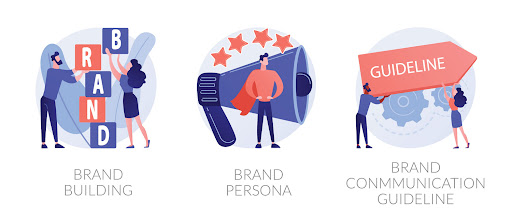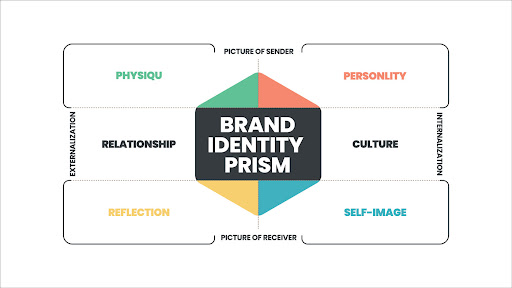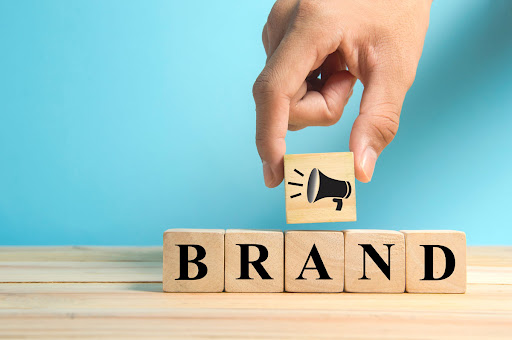Creating a Unique Brand Personality For Your Business – A Step by Step Guide

Learn how to establish a distinctive brand personality for your business with our step-by-step guide. Build a strong personality that sets you apart from the competition.
Every marketing campaign requires a well-established brand identity. Consider your business to be hazardous, severe, or conventional. Those are most likely the consumers you wish to acquire.
Modern consumers desire a sense of connection and familiarity with a brand. Customers may seek the products and services they want elsewhere if a brand needs to be more relatable. Structured brand identity models can aid businesses in establishing their distinct brand personalities. A framework provides a starting point for companies to develop an effective plan.
In this article, you will discover the most effective methods to imbue your brand with a personality that conveys your message to your target audience and encourages them to stick with you.
What is brand personality?
Brand personality gives a company’s brand or product a more human quality by giving it a set of apparent personality traits. It’s a valuable tool that can set a brand apart and improve how customers see it.
We use words like upbeat, young, serious, friendly, or intelligent to describe businesses, just like we would a good friend or someone we just met. A business’s brand identity is shown through its voice and brand design. With this set of human traits, you can help a person feel more connected to your brand and get more out of it.
The human traits that make up a brand’s personality can connect with a large group or specific groups of people, making your business stand out. For example, some car brands might try to represent themselves as exciting, rugged, or sophisticated. In contrast, others might try to show they are reliable, cheap, or sincere.
Why is the personality of a brand so important?
There are many reasons why brand personality is essential. It could help:
- Build brand awareness. Customers are more likely to remember a brand and choose it over others if they can connect to its personality.
- Create a solid emotional connection: A brand’s personality can help people feel good about it, leading to more sales and money.
- Set yourself apart from the competition: A brand’s attitude can help it stand out in a crowded market.
- Attract and keep customers: A brand’s personality can help attract and retain customers who believe and value the same things as the brand.
- Build brand loyalty: When customers feel connected to a brand’s personality, they are likelier to stay loyal to the brand over time.
Many businesses must remember to give their brand a personality, making it look uninteresting. Competitors who started emotionally linking with their audience can easily beat these businesses.
Essential Elements of Brand Personality
Jennifer Aaker, a Stanford graduate, utilized existing research and evidence in personality psychology to develop the five dimensions of brand personality. By applying these human dimensions to the construct of it, she identified five core dimensions which include:
Sincerity
Sincere brands tend to have traits like being clean, happy, honest, and down-to-earth. In a way, they’re like Disney or Hallmark in that they’re generally suitable for the whole family. People are more likely to buy from a brand with the same personality. This personality type might work best for your business if you’re in the food, entertainment, or safety industries.
Excitement
People often think that brands that show energy are spontaneous, sporty, open, edgy, and in style. These brands are usually made for younger people. Red Bull, which sells energy drinks to sports, artists, and other people who like to stay busy, is an excellent example. Red Bull keeps its target audience interested and involved through celebrity endorsements, shows and music, social media, and extreme sports.
Competence
Branding strategies that show skill tend to stand out as trustworthy, skilled, and up to high standards. People also often consider themselves stars and experts in their areas. Customers can count on these companies to help them solve their problems. When we talk about skill, Microsoft is a name that comes to mind. Since the 1970s, the brand has been on the cutting edge of innovation, making reliable computer products.
If you work in health care, banking, insurance, or even logistics, this personality trait might fit with your job.
Sophistication
When considering sophisticated names, people often think of elegance, wealth, and the upper class. Names like Louis Vuitton, which sells expensive clothes and handbags, might come to mind when you think of sophistication. Characters with a lot of styles are all about prestige. If you want to sell expensive goods under your name, you might try to show that you are sophisticated.
Ruggedness
When people hear the word “rugged,” they might think of things like being tough and lasting long. A rough demeanor can seem tricky and good at being outside. The name Harley-Davidson is known for being tough. People like this brand because it is free-spirited and always wants to be alone. If you wish for people who want to be themselves and see everything the world offers to come to your business, you may need to toughen up.
How to Build the Personality of Your Brand: 5 Steps
How do you know how to get to know each person individually? Finding the right thing to say or do for everyone takes time.
Remember that all of your users want your product or service. It is the most important thing to keep in mind. Use this as inspiration to grow your business and get more people to follow you.

Here are five steps on how to create brand personality effectively:
1. Figure out what you want
Finding a good mission statement or catchy phrase can help your business get known and stand out.
It helps keep the brand’s words on the same track, which gives customers who value that trait a sense of reliability and routine. You can think of this as the heart of your brand or its model.
Having a consistent theme can also help build the visual character of your brand. This idea can be shown in your design, color scheme, and fonts.
If you are a non-designer, there are graphic design tools that can aid you create a consistent design for your brand like Renderforest. RenderForest is a design platform for creating personalized, engaging, and compelling visuals. Its goal is to help businesses create unique brand personalities that stand out from the competition. With RenderForest, you can easily create Youtube intros, make a website, promotional videos, logo animations and more – all with an easy-to-use online platform. It also provides tools to help you create a mockup of your brand’s visuals, so you can get an idea of how it’ll look in the end. RenderForest makes it easy to create eye-catching visuals that will help your business stand out and make a lasting impression on customers, allowing you to create a unique brand personality that resonates with them.
This stability in everything usually makes people loyal to the brand and keeps old customers while attracting new ones. Consistency gives your brand’s personality outline more shape and gives you a model for designing your brand.
When making a company personality, authenticity is also essential. Don’t try to be someone you’re not or change your attitude in a way that goes against what you believe in.
People can tell when something isn’t real from a mile away, which hurts your brand’s image. People don’t want to be lied to; if your brand has a real personality, lies won’t stick to it.
2. Get ideas from the people you’re writing for
As we’ve talked about quickly, your audience should be interested in your product or service, and they are. Let that motivate you to make content that goes deeper with the people you want to reach. Don’t stop there, though.
Look for comments, things people liked, and something that could work. You’ll soon see that buyers often have the best help.
3. Think of your business as an individual
The way someone speaks says a lot about who they are. Your brand voice should be a part of who your company is. Make sure the way you talk to your audience is always the same.
It helps you figure out how to keep pushing your brand experience and giving your audience a sense of consistency.
You should also ensure that your business’s personality is the same across all of your marketing channels. Your web page, customer email addresses, and social media should all use your brand’s colors, style, and identity for the most engagement and brand recognition.
Everyone enjoys hearing a good story. People would only be able to look back at history, whether it was directly or distantly connected to them, with stories.
People learn and grow by doing this. Customers will feel more connected to your business if you tell your company a unique story through ads and products.

This also gives your brand identity features, making it seem almost like a person. Remember that science links emotional ties in business to anthropomorphism, which means giving things human-like qualities. Make sure your business focuses on this.
4. Draft a brand style guide
A brand style guide is a document explaining how a brand should be shown and discussed on all platforms and in all types of communication.
It is a guide that helps ensure the brand’s message, tone, and visual character are consistent, no matter who makes the content.
This guide can help you keep the same friendly attitude for years or even decades. Consistency is a theme that you almost always want to have. Learn as much as you can about your customers.
This also builds trust in your viewers without them even realizing it. Think about the lizard on the GEICO sign, right? He speaks English well. When you see him, you think of GEICO right away, right? Look at how the company’s name, “Gecko,” sounds like the animal’s name.
What’s more? “15 minutes could save you 15% or more on car insurance.” Even if you only remember that voice because it sounds the same every time, you remember it because you get used to hearing it from this little green gecko.
These comforts come from one thing: it’s always the same.
5. Do a market study, make changes, and do it again
Once you know how your brand should act, be ready to change and learn from everything you do and meet. The personality of your business is flexible. As your business grows and changes, so should people’s thinking of your brand.
Always consider how your audience responds to your brand’s personality and make changes where your brand’s character needs to be added. At the same time, remember that branding uniformity is the key to getting this right.
Find out which marketing efforts get the best results. Change a little bit how you talk through your brand. And when this is all done, do it again.
By following these steps, you can develop a strong brand identity that will help you connect with your target audience and build a successful brand.
5 Popular Brand Personality Examples
You probably know a few top names and feel like you know them personally. This isn’t a coincidence; it’s a brilliant way for brands to develop human traits that can make customers more interested in them.

Here are five well-known brands that do an excellent job of showing who they are.
1. Coca-Cola
Coca-Cola’s brand image combines enthusiasm and sincerity. Its holiday packaging, brand colors, new flavors, and numerous campaigns like “Share a Coke” make people feel joyful, optimistic, and receptive to new ideas. It exemplifies Carl Jung’s freedom type, The Innocent, which views everything positively. Each year, the brand style and personality of Coca-Cola feel like a familiar friend.
2. Chanel
The Chanel name is both old and new and very classy. Chanel goods are made for a very select group of people. They have a high level of prestige and appeal to people who want to feel close to a brand that values style and elegance. The brand appeals to the Lover archetype because it is sensual and firmly linked. Luxury brands often need help to stand out from the competition. Still, Chanel does a great job of showing how the “less is more” method can be a winning strategy.
3. Apple
Apple is known for being an innovator and a leader in the technology industry. With its intelligent brand style, Apple has made a name for itself. The Apple name appeals to many people and is known for its high-quality products. It doesn’t need sales or lower prices because its name is well-known and stands out. It also stops competitors from having price wars. The Apple brand wants to change the world with goods that only The Magician archetype can make.
4. REI
REI is different from other outdoor stores because it is user cooperative and has a unique past. REI can focus on fewer customers and give them more time and energy. The outdoor co-op was started by 23 climbing friends who all love the wild, untamed woods and want to help charities and sustainability efforts. REI is an excellent place to shop for people who like to travel and be outside. People know that the REI brand is rugged and robust. This brand image appeals to explorers who want to go on new adventures.
5. Disney
People go to Disney for joy, and Disney makes their dreams come true. Disney has always been doing well; magic still happens in its shops, parks, and TV. The Disney brand makes big claims and keeps them, just like Jung’s Ego types. Disney’s attitude is similar to that of a magician known for being creative and amazed like a child.
Conclusion
A critical step in building a solid and successful brand is giving your business a unique personality. By defining your brand’s purpose, study your target audience, choose your brand’s attributes, develop your brand voice, and be consistent in how you talk about your brand’s personality. Remember that how you say something is just as important as what you say. Consistency is essential, so make sure that all of your branding efforts stay true to the personality of your business. With the right plan and method, a company can bring its brand identity to life and connect with its audience meaningfully.
